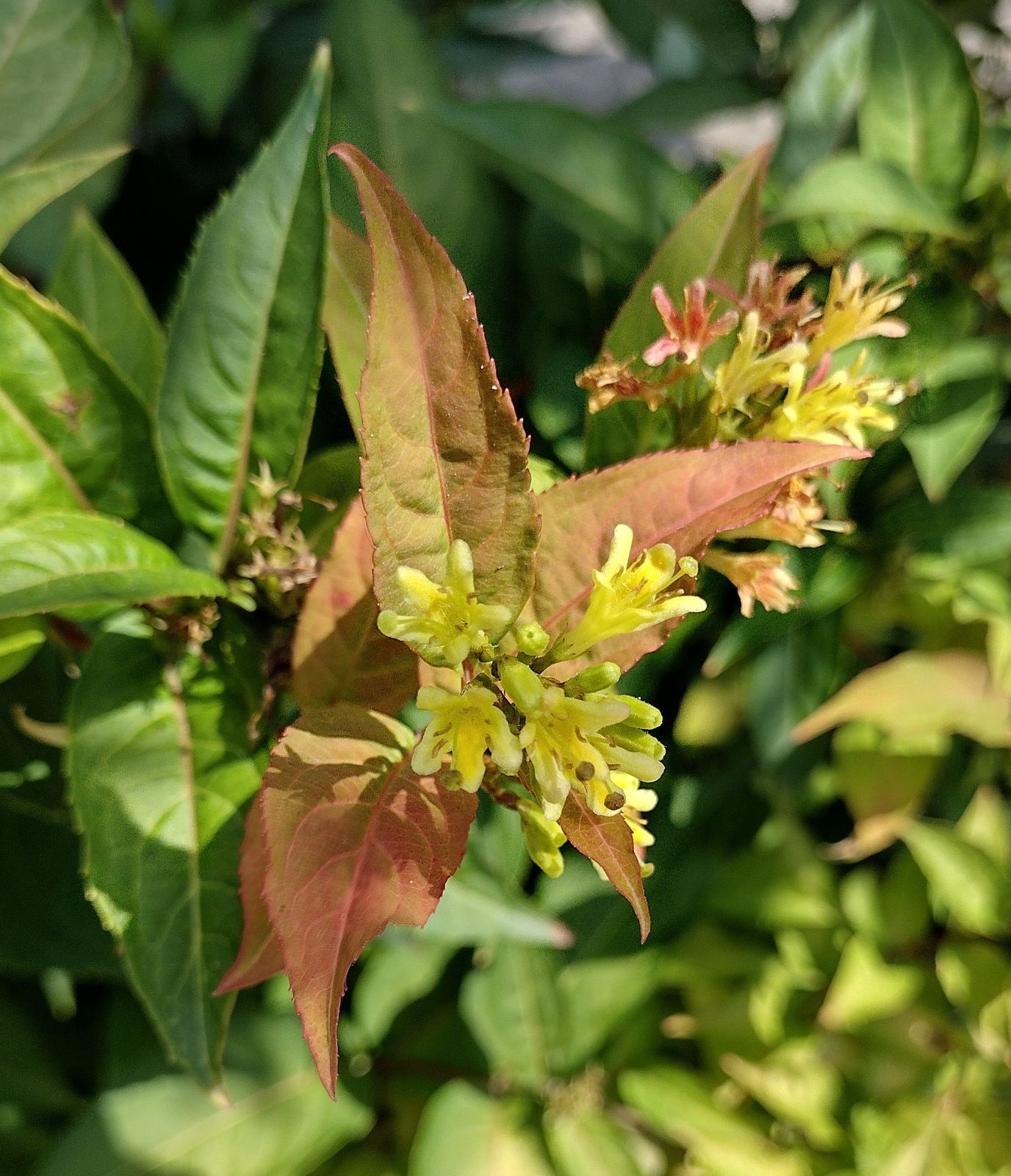Diervilla rivularis
Sponsor
Kindly sponsored by
The Normanby Charitable Trust
Credits
David Purvis & Tom Christian (2019)
Recommended citation
Purvis, D. & Christian, T. (2019), 'Diervilla rivularis' from the website Trees and Shrubs Online (treesandshrubsonline.
Genus
Common Names
- Hairy Bush Honeysuckle
Infraspecifics
Other taxa in genus
Shrub to 2 m, hairy in all parts. Shoots quadrangular, densely hairy all over including between the nodes. Leaves to 7cm long, ovate to oblong-lanceolate, apex acuminate, margins toothed, usually sessile or with a very short petiole, densely hairy beneath. Inflorescences aggregated forming terminal panicles. Flowers lemon-yellow. Fruit capsule hairy, to 7 mm long (Lance 2004; Cullen et al. 2011).
Distribution United States Southeastern states, from North Carolina and Tennessee south to northern Georgia and Alabama.
Habitat Bluffs and other rocky habitats, often near watercourses. Uncommon.
USDA Hardiness Zone 5b
RHS Hardiness Rating H7
For a general discussion see the genus article.
'Honeybee'
Synonyms / alternative names
Diwibru01™
A clone with golden-yellow leaves, which may be best in dappled shade rather than full sun (bluebellnursery.com).
KODIAK® Series
The KODIAK® Series of Diervilla rivularis cultivars has helped to repopularise the genus in North American horticulture in recent years. Besides interest through the growing season they are also noted for their vivid autumn colours (Hatch 2017).
- KODIAK® Black distinguished by spring and summer foliage coloured ‘glossy dark purple to dark burgundy-black’
- KODIAK® Orange with leaves ‘rich reddish-orange at first, more green later’
- KODIAK® Red ’leaves rich red in spring, becoming green margined and tinged red, new growth all summer remains red’
'Morton'
Synonyms / alternative names
SUMMER STARS™
This clone was selcted at the Morton Arboretum and introduced to the trade by the Chicagoland Grows programme in 1992. It was selected for its compact growth (60–90 cm height) and its suitability for cultivation in the upper midwest (Hatch 2017).
'Troja Black'
This cultivar is described as having strongly purple-bronze young foliage, maturing dark green through the growing season, and vivid autumn colours. It is also noted for its drought resistance (bluebellnursery.com).





